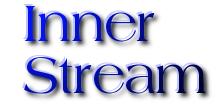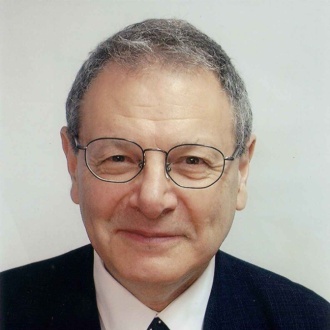Vayera: Eat and Drink
Planting In A Well
“And [Abraham] planted an Eshel in B’er Sheva.” Eshel is an inn, a place to eat and drink,[1] strangers passing through B’er Sheva, were invited to Abraham’s tent to eat and drink. When they had their fill, Abraham would invite them to thank G-d for the food and then accompany them on their way home.[2]
Everything that occurred to the Patriarchs must serve as a lesson to us. We learn the ethics of hospitality from our forefather Abraham, but not everyone can build an Eshel in B’er Sheva. How is this aspect of Abraham’s life, the inn in Beer Sheva, a lesson to us in our times?
B’er Sheva means seven wells. Geographically it was an oasis in the Israeli desert where seven different wells were discovered. Conceptually, however, B’er Sheva is a state of mind. A wellspring spouts pure, fresh water from the parched desert ground. The constant flow of crystal clear represents our soul’s yearning for G-d. From the soul’s perspective, the physical environment of the world is spiritually barren. Yet, in this spiritual desert, our souls spring forth and pine for G-d seven times a day when we chant the seven blessings before and after the Shema.[3] Indeed, the soul is its own B’er Sheva.[4]
It is within our soul’s B’er Sheva that we must plant an Eshel, a place to eat and drink. Just as the well served as a euphemism for the soul’s innate yearning so does food and drink serve as a euphemism for Torah and Mitzvot. Food parallels the Torah because like food, the Torah’s ideas are digested. The only difference is that food is digested gastronomically and ideas are digested mentally.[5] Drinks represent Mitzvot for a different reason to which we shall return later in this essay
Body and Soul
When we eat we nourish the blood supply that delivers oxygen to the brain and the rest of the body. Oxygen is our life force and life comes from G-d or more particularly, our soul – G-d’s breath of life within us. Oxygen is carried by the blood, the supply of which is nourished by the food we eat. In other words,  our food feeds our blood supply, which is our bridge between body and soul.[6]
our food feeds our blood supply, which is our bridge between body and soul.[6]
In the same way, Torah study is the bridge between G-d and the world. When He created the world, G-d stipulated that He would only sustain creation if the Jews consented to accept His Torah.[7] Torah is the purpose of creation. When we study Torah we form a bridge between G-d and creation. The universe is vast and nearly unending, but compared to G-d it is finite and infinitesimally small. The flow of creative energy and life force from G-d into the world is a tiny trickle compared to the boundless and infinite output of which G-d is capable. The gulf between G-d and creation is without limit, yet our Torah study creates a bridge. When we study Torah we introduce an orderly, but infinite projection of Divine radiance into our world.
Hydration
Next comes Mitzvot. Just as we cannot live by food alone, we must eat and drink, so is it unreasonable for us to study Torah without practicing Mitzvot. If we are to study G-d’s will we must implement it in our daily lives. Let us return to the human body for insight.
Food is digested and transformed into blood, but it is distributed through the body via the circulatory system. If we don’t hydrate the system it dries up and the blood flow is impeded. [8] Liquid is the lubricant that hydrates the body and allows oxygen to be delivered smoothly and flawlessly to organ and limb.
Let us examine the relationship between the organs and their life force – the oxygenated blood supply. The very same blood supply is pumped through the entire body, yet it engages and activates each organ differently. When the eye is animated, it sees. When the ear is animated, it hears. The very same life force stimulates vision in one organ and audio in the other.
This is because the life force contains the entire skill set of the human body and each organ is designed to draw out only its particular trait. From the eye’s perspective sight is unique. From the ear’s perspective, sound is unique. From the soul’s perspective, they are all human traits. This is why a single activity can engage many separate skills. Drawing for example, activates the fingers primarily, but the arm, eyes and mind also play vital roles. The binding agent between these separate organs and limbs, is the collective life force that they share.
We now return to Mitzvot. If the Torah is the world’s blood supply, the Mitzvot are its limbs. Drinking or the practice of Mitzvot, distributes Divine energy of Torah to every part of the world. Each Mitzvah represents the limb or organ with which it is fulfilled. Charity is practiced with the hand. Prayer with the lips. Love of a fellow with the heart and so on.
Each Mitzvah has a unique time slot. Hearing the Shofar blasts is only a Mitzvah on Rosh Hashanah. Eating Matzah is only a Mitzvah at the Seder. Eating in a Sukkah is only a Mitzvah during Sukkot. Each Mitzvah also has a unique place. You can only return a lost item when you meet the owner. You can only build a parapet on your roof. You can only practice Shemitah, the Sabbatical year, in Israel. The Mitzvot are focused and specific because each draws Divine energy into a particular area of the world or aspect of life. Yet, the many varied Mitzvot are informed by the same singular Torah.
From the standpoint of the Mitzvah, it is unique. From the Torah’s standpoint all Mitzvot are equal representations of the Divine will. This is why the Torah transcends time and space. Our sages taught that when we study the laws of a sacrifice G-d considers it as if we had offered that sacrifice in the here and now. Similarly, studying the laws of Passover is akin to celebrating Passover. One can study the laws of any Mitzvah at any time and in any place and receive merit as if he or she actually observed the Mitzvah. This is because the Torah represents G-d’s general presence in the world whereas the Mitzvot represent the particular methods by which He chooses to interface with us.
Yet the final goal and highest objective is not Torah study, but the Mitzvah. It might be particular and focused, but it is the entire point. Donating blood to a blood bank is only beneficial if it is allocated to a patient in need. Blood is useless if it is not allocated. The point of Torah is to allocate G-d’s energy to the world in the particular way that only Mitzvot accomplish.
When your soul pines for G-d, when you are in your own B’er Sheva, you must plant an Eshel – a place to eat and drink. Torah knowledge and meditation are not enough. To truly connect with G-d we must do what He wants, we must reach the point of it all, the Mtizvah. We must plant an Eshel – a place to eat and drink.[9]
[1] Genesis 21: 33. Alternatively the Talmud (Sotah 10a) suggests it is an orchard, the source of food and beverage.
[2] Fittingly, the word Eshel is an acronym for Achila, Shtiya Leviya, loosely translated as eat, drink and accompany.
[3] See Rashi to Pslams 119: 164 and to Brachot 11a. Seven also relates to the emotive expressions of the soul.
[4] Fittingly the word Beer is an acronym for B’yadcha Afkid Ruchi (Psalms 37) In your hand I entrust my soul.
[5] Proverbs 9:5 and Psalms 40:2.
[6] Fittingly the word Adam is an acronym for Alef-Dam. Alef is G-d, whose oxygen flows through our Dam – blood.
[7] Babylonian Talmud, Psachim 69b. See also Rashi’s commentary to Genesis 1:1 and 1:31.
[8] Babylonian Talmud 41a.
[9] This essay is culled from Sefer Mamarim 5755 pp 27-40























